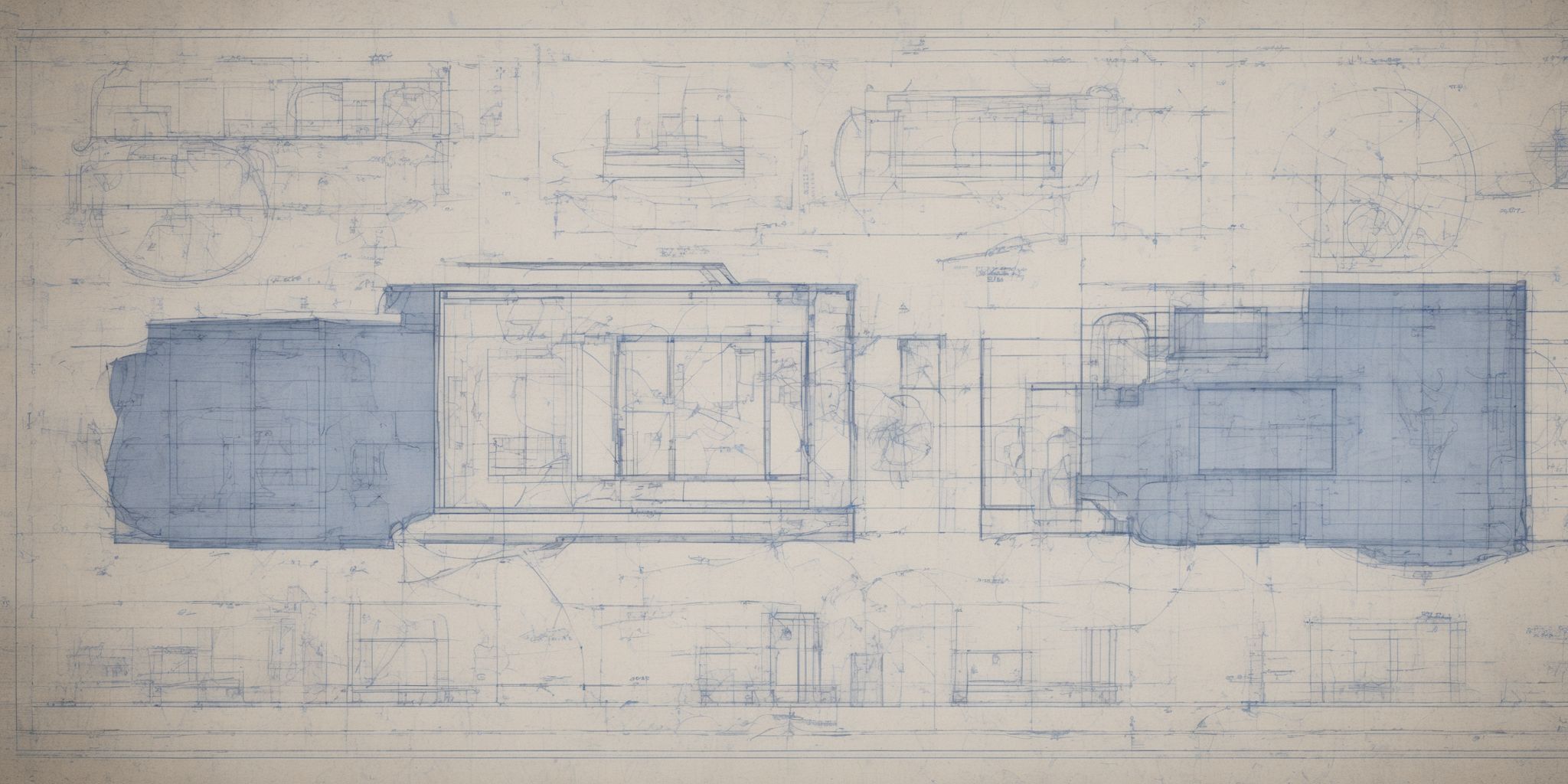Down Payment Calculators: Planning for Your Dream Home Made Easy
Are you daydreaming about that perfect little home with a white picket fence? Or perhaps you picture yourself lounging on a luxurious penthouse balcony, admiring breathtaking city views? No matter what your dream home looks like, one thing is for sure: saving for a down payment can feel like an insurmountable mountain to climb.
Well, worry no more! Thanks to modern technology, down payment calculators have emerged as your knight in shining armor, simplifying the daunting task of planning for your dream home and making it - dare I say it - easy! So grab a cup of coffee, sit back, and let's explore the world of down payment calculators, your trusted companions on this exciting financial journey.
Understanding Down Payments
What is a down payment?
A down payment is the initial payment made when purchasing a home, typically expressed as a percentage of the total purchase price. It serves as a way for homebuyers to demonstrate their commitment to the purchase and reduce the amount of money they need to borrow.
For example, if a home costs $300,000 and the down payment is 20%, the buyer would need to provide $60,000 upfront. This upfront payment reduces the loan amount required and can lower monthly mortgage payments. Down payment calculators help determine the optimal amount needed based on factors like home price, loan type, and desired monthly payments, making the home buying process more manageable and transparent.
Why are down payments important?
Down payments are an integral part of purchasing a home, allowing you to secure a mortgage and reducing the loan amount. They demonstrate your commitment to the purchase and provide a financial buffer for lenders. With a larger down payment, you can potentially qualify for a lower interest rate, resulting in long-term savings.
For example, a 20% down payment eliminates the need for private mortgage insurance (PMI), which can save you thousands of dollars over time. Moreover, a substantial down payment reduces the risk of negative equity if property values decline. By understanding the importance of down payments, you can make informed decisions when using down payment calculators to plan for your dream home.
How much should you save for a down payment?
When determining how much to save for a down payment, it's important to consider various factors such as your desired home price, loan options, and personal financial situation.
Typically, a down payment is a percentage of the purchase price, commonly ranging from 5% to 20%.
For example, if you aim to buy a $300,000 house and want to provide a 10% down payment, you should save $30,000. However, it's crucial to find a balance between a larger down payment to reduce monthly mortgage payments and ensuring you have enough savings for other financial goals, emergencies, and expenses related to homeownership. Using down payment calculators can help you estimate the amount needed based on your specific circumstances.
Benefits of Using Down Payment Calculators
Accurate Estimations
- Accurate estimations are one of the key advantages of using down payment calculators.
- These calculators take into account various factors such as loan amount, interest rates, and repayment terms to provide you with precise figures.
- By inputting your financial details, you can get a clear understanding of the down payment amount you need to save.
- This helps in avoiding surprises or disappointment later on when you start the home buying process.
- With accurate estimations, you can plan your savings strategy effectively and set realistic goals to achieve your dream home.
Saving Time and Effort
By utilizing down payment calculators, you can save significant time and effort in determining how much you need to save. These calculators simplify the process of estimating your down payment amount by taking into account various factors such as your income, expenses, and desired loan terms. Instead of manually crunching numbers and researching mortgage options, you can input your financial details and receive instant results.
This allows you to quickly compare different scenarios and make informed decisions about your savings goals. With the ability to easily explore multiple options, you can efficiently plan for your dream home without the need for extensive manual calculations.
Exploring Different Scenarios
One of the major advantages of using down payment calculators is the ability to explore different scenarios. These calculators allow you to input various variables such as loan terms, interest rates, and down payment amounts to see how they affect your monthly payments and total cost over time. By adjusting these factors, you can quickly determine which scenarios are most financially feasible for your dream home. For instance, you can compare the impact of a higher down payment with a lower interest rate to see which option saves you more money in the long run. This flexibility empowers you to make informed decisions based on your specific financial goals and constraints.
How Do Down Payment Calculators Work?
Inputting Financial Details
Inputting financial details is a fundamental step when using down payment calculators. These tools require accurate figures to provide reliable results. Start by entering your total annual income, including all sources of revenue.
Next, input your current monthly debt obligations, such as student loans or car payments. Don't forget to include your credit score, as it affects your loan options and interest rates.
Additionally, provide the desired loan term and interest rate to assess different scenarios. By inputting these financial details accurately, you can obtain an estimate of your required down payment and monthly mortgage payments, helping you plan for your dream home more effectively.
Analyzing Loan Options
- Compare Different Interest Rates: Down payment calculators can help you evaluate the impact of varying interest rates on your overall mortgage payments. By inputting different rates, you can see how it affects your monthly installments and the total amount you'll pay over the loan term.
- Adjust Loan Term Length: Use down payment calculators to determine how the loan term length impacts your payments. Changing the duration from, for example, 30 years to 15 years, can significantly affect the monthly amount you need to budget for.
- Explore Different Loan Types: Down payment calculators allow you to assess various loan options such as fixed-rate mortgages, adjustable-rate mortgages, or government-backed loans. Each type has its pros and cons, so it's crucial to review which one aligns better with your financial goals and ability to make down payments.
Calculating Monthly Payments
Calculating monthly payments is a vital aspect of using down payment calculators. These calculators consider your loan amount, interest rate, and loan term to determine how much you'll pay each month. By inputting these financial details, you can get an accurate estimate of your monthly obligations.
For example, a higher loan amount or interest rate will result in larger monthly payments. This information enables you to assess your budget and make informed decisions. It's important to remember that monthly payments should align with your financial capabilities to ensure you can comfortably afford your dream home without straining your finances.
Determining Required Down Payment
Determining the required down payment is a crucial step when planning for your dream home using down payment calculators. These calculators consider various factors such as the purchase price, loan type, and loan-to-value ratio to help you determine the minimum down payment amount.
For example, if you plan to buy a $300,000 home with an 80% loan-to-value ratio, the calculator will tell you that you need to save at least $60,000 as a down payment. By accurately knowing the required down payment, you can set achievable savings goals and avoid surprises during the home buying process.
Top Down Payment Calculators in the Market
Zillow Mortgage Calculator
The Zillow Mortgage Calculator is a popular tool for homebuyers looking to calculate their down payment. It allows users to input information such as their purchase price, interest rate, and loan term to get an estimate of their required down payment. This calculator also provides a breakdown of monthly mortgage payments and shows how different down payment amounts affect overall costs.
With its user-friendly interface and comprehensive results, the Zillow Mortgage Calculator simplifies the process of planning for a down payment and helps individuals make informed decisions when purchasing their dream home.
Bankrate Down Payment Calculator
Bankrate Down Payment Calculator is a popular tool for homebuyers to assess their down payment requirements. It allows users to input their financial details, such as income, savings, and credit score, to determine the appropriate down payment amount. This calculator provides a simple and efficient way to analyze different loan options and understand how varying down payments can impact monthly payments.
By using the Bankrate Down Payment Calculator, individuals can gain valuable insights into their affordability and make informed decisions when planning to purchase their dream home.
NerdWallet Down Payment Calculator
The NerdWallet Down Payment Calculator is a useful tool for estimating how much you need to save for your dream home. It allows you to input various financial details, such as your income, expenses, and desired down payment percentage. With this information, the calculator generates an estimate of your required down payment and monthly mortgage payments. This can help you determine if your financial situation aligns with your homeownership goals.
By exploring different scenarios and adjusting the inputs, you can also assess how different down payment amounts impact your monthly expenses. This empowers you to make informed decisions and create a realistic savings plan.
Tips on Using Down Payment Calculators
Be Realistic with Your Financial Situation
When using down payment calculators, it's important to be realistic with your financial situation. Here are some practical tips to keep in mind:
- Evaluate your current income and expenses to determine how much you can realistically save for a down payment.
- Consider any outstanding debts or financial commitments that may impact your ability to save for a down payment.
- Take into account future expenses such as home maintenance, property taxes, and insurance.
- Be mindful of potential changes in your financial situation, such as job stability or fluctuations in interest rates.
- Remember that the down payment is just one aspect of homeownership – be prepared for other costs like closing fees and moving expenses.
By being honest about your financial capabilities, you can use down payment calculators effectively to plan for your dream home without overextending yourself financially.
Consider Additional Costs
In addition to the down payment, it's important to consider the additional costs associated with buying a home. These costs can include closing costs, which typically range from 2% to 5% of the home's purchase price, and can cover expenses such as appraisal fees, title insurance, and legal fees. Another cost to consider is homeowner's insurance, which protects your investment and is often required by mortgage lenders. It's also wise to budget for ongoing expenses like property taxes, maintenance, and utilities. By factoring in these additional costs, you can ensure that you're financially prepared and avoid any surprises along the way.
Revisit and Update Calculations Regularly
- Regularly updating your down payment calculations is crucial to stay on track with your savings goals and adjust for any changes in your financial situation.
- As factors such as income, expenses, and interest rates fluctuate, it's important to reassess your down payment savings plan to ensure it remains achievable.
- Market conditions and housing prices may also change over time, impacting the amount you need to save for a down payment.
- Revisiting your calculations regularly allows you to make informed decisions and make necessary adjustments to your savings strategy.
- By staying proactive and up to date with your down payment calculations, you can better align your financial goals with the reality of purchasing your dream home.
Key takeaways
Planning for your dream home just got easier with the help of down payment calculators. These handy tools take the guesswork out of figuring out how much money you need to save for a down payment. By entering a few key details such as the home price, loan terms, and desired down payment percentage, the calculator will provide you with an estimated amount that you should aim to save. This can help you set realistic savings goals and determine the timeframe in which you can achieve them.
With thesimplicity and convenience of down payment calculators, turning your dream of homeownership into a reality is within reach.


